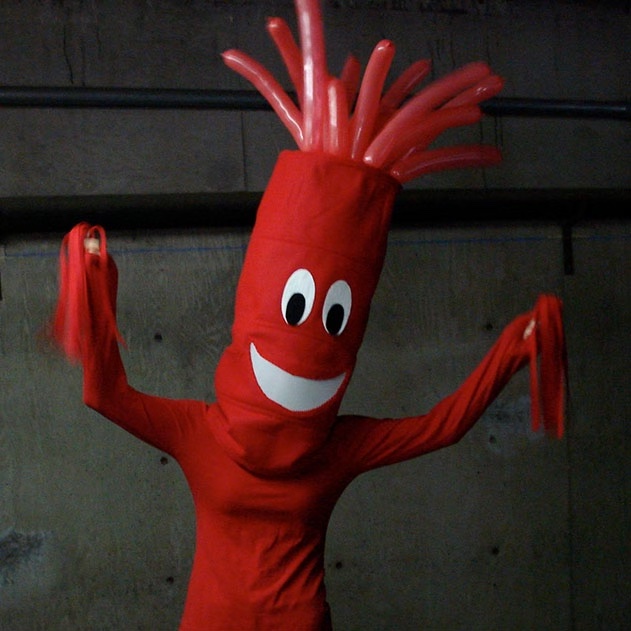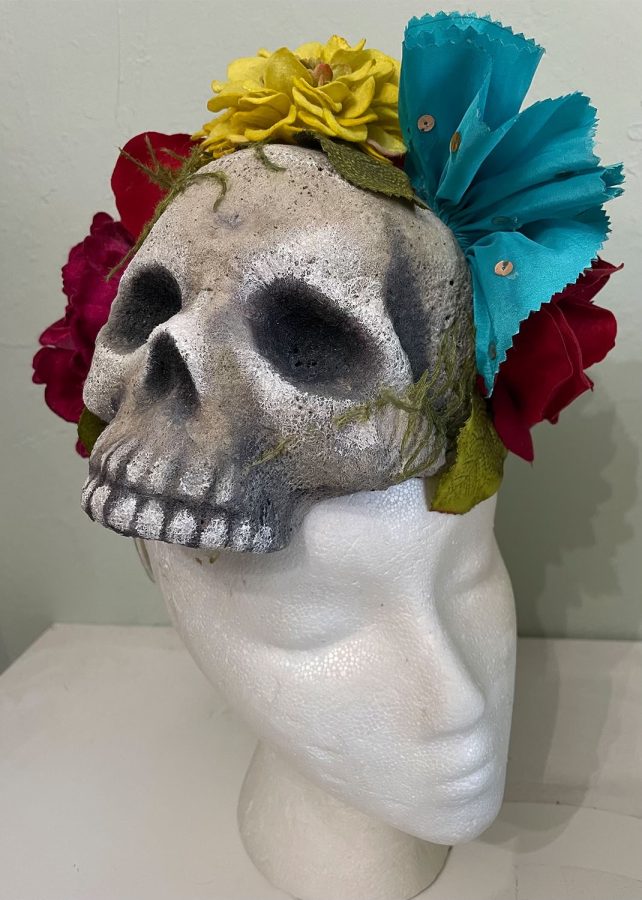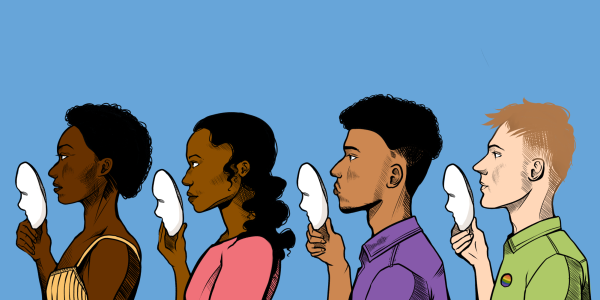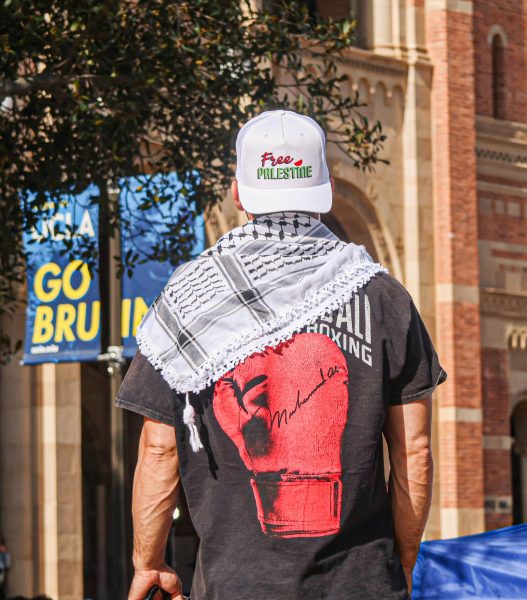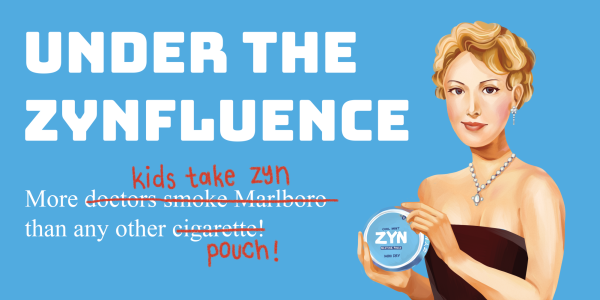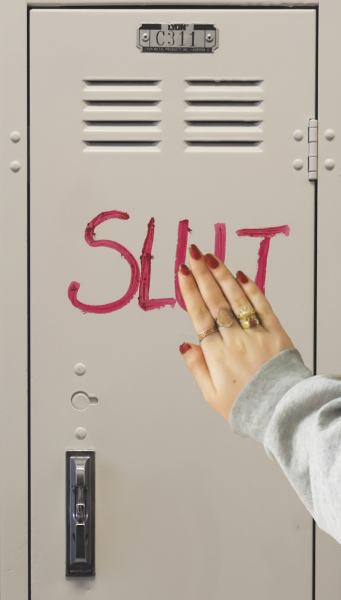A Costume Conundrum
Printed with permission from Lisa Peters
Performing Arts Teacher Lisa Peters poses in her Wacky Waving Inflatable Tube Guy costume that she made herself.
October 29, 2022
As Andres Alas ’25 walked through a costume store to buy his Halloween costume, he looked at the materials discovering that one of his favorites was made of 100 percent synthetic—non-biodegradable—material. Alas discovered this in conjunction with the environmental unit in his French class, so, as a result, he returned the costume to where he had found it. After this, he decided that he would put a costume together from clothes he already had and would only buy new things for the costume if he knew he would wear them again.
According to Renee Cho from the Columbia Climate School, which funds and supports the research of the effects and consequences of climate change, fashion is one of the main causes of the degradation of the environment.
“Fashion is responsible for 10 percent of human-caused greenhouse gas emissions and 20 percent of global wastewater,” Cho said. “[It] uses more energy than the aviation and shipping sectors combined.
AP Environmental Science teacher Nadine Eisenkolb said Halloween costumes perpetuate the damage fashion does on the environment.
“Halloween costumes] are the poster child for fast fashion,” said Eisenkolb. “Synthetic fibers are manufactured which costs energy when clothes are dyed a lot of chemicals and water is used and the wastewater needs to be disposed of and cleaned. Clothes used to be made to last long and be passed down for generations, but now they are made more cheaply and do not last as long.”
Eisenkolb also talked about the socioeconomic effects of cheaply made clothing and how these influence the environment.
“Additionally many clothes are made in places where labor is cheap, and labor conditions poor, and there are no laws regulating the waste of air and water pollution being emitted,” Eisenkolb said. “This cuts costs for the producers and makes the clothes cheaper for the person that buys them but the environment and the people working in poor conditions suffer the consequences instead.”
Eisenkolb said the effects of the transportation of these clothes are devastating.
“Additionally, these clothes need to then be shipped around the world to where people buy them, which again costs energy and emits greenhouse gasses,” Eisenkolb said.
Eisenkolb also had some advice regarding the Halloween costume procural.
“A throwback Halloween-themed costume that uses an old Halloween costume from the 70s or something could prevent the fast fashion trend and be fun,” said Eisenkolb. “Note [that] this only works if the costume was actually worn before and you are bringing it back to life so to speak. Equally, upcycling materials to make a costume out of recyclable items might be a fun idea.”
Moreover, Eisenkolb shared her personal experience making a costume where she reused a lot of plastic to dress up as a creature stuck in a plastic bottle. She said that she wanted to bring light to the dangers plastic waste poses to the environment.
Performing Arts Teacher Lisa Peters teaches sewing to students and said that she often makes costumes as an alternative to purchasing an entirely new costume each Halloween.
“I prefer to either make an entire costume from scratch or to take a hybrid approach,” Peters said. “I sometimes repurpose pieces I already have. Or, I purchase garments from thrift stores, alter them, and then add whatever trimmings or details are needed. It really depends on the costume I have in mind and how much time I have.”
In addition to conserving the Earth’s natural resources, Peters said there are a few other benefits to making her own costumes.
“The result is something entirely custom and unique,” Peters said. “I also enjoy the process of creative problem-solving and making things with my hands. It’s very relaxing and rewarding for me.”
On the actual night of Halloween, Eisenkolb said that it is also important to pay attention to other potentially environmentally damaging factors.
“Looking at candy that has little packaging and does not use palm oil is a good thing to keep in mind during this special time,” Eisenkolb said.
Aiden Ahuja ’25 said that he is going to buy his costume because it is more convenient to do so.
“My costume is from a very niche movie, so I wouldn’t have been able to assemble a costume from clothes I already had,” said Ahuja. “It’s a lot easier to just order the clothes. I could probably wear them again in a normal setting though.”
Nicola Dadlani ’25 said that she is taking a hybrid approach to her Halloween costume—she is going to use clothes she already has, but buy face paint.
“The reason I decided to make my own costume was because I was honestly too lazy to find one,” Dadlani said. “But then, I realized that it would also be beneficial for the environment, and that was a plus.”
































